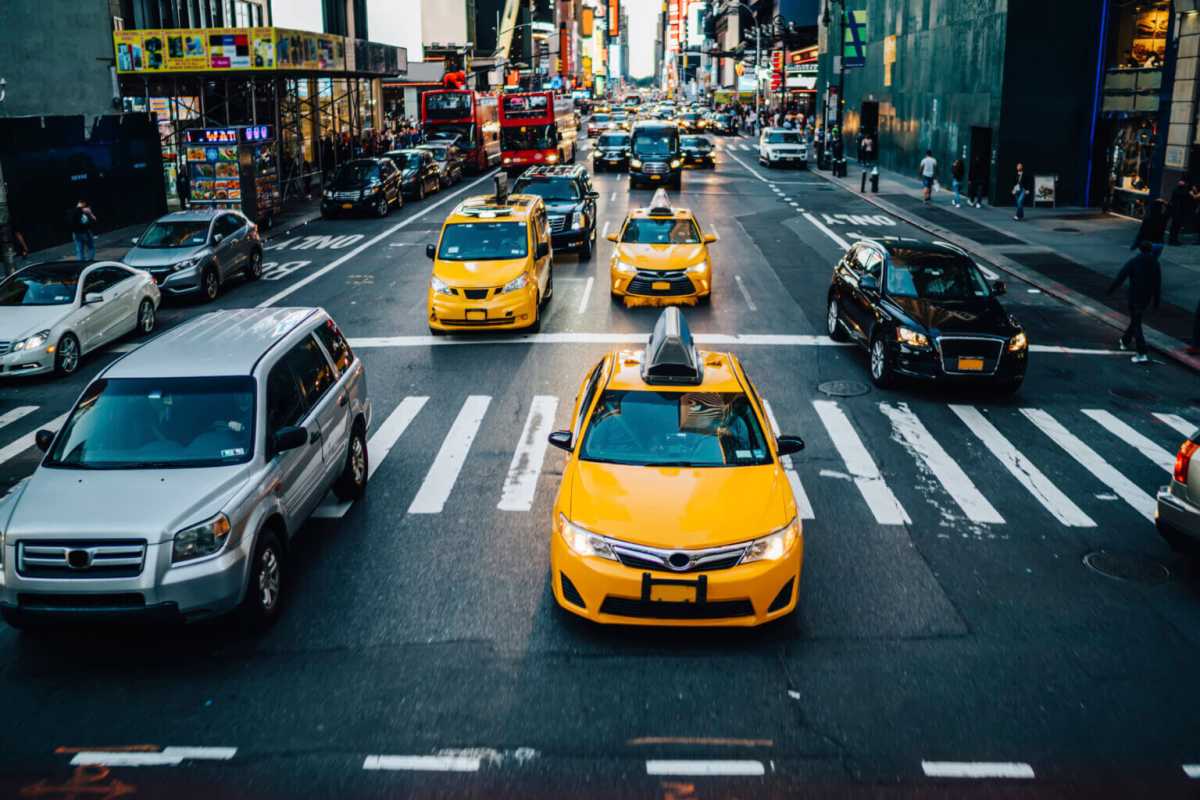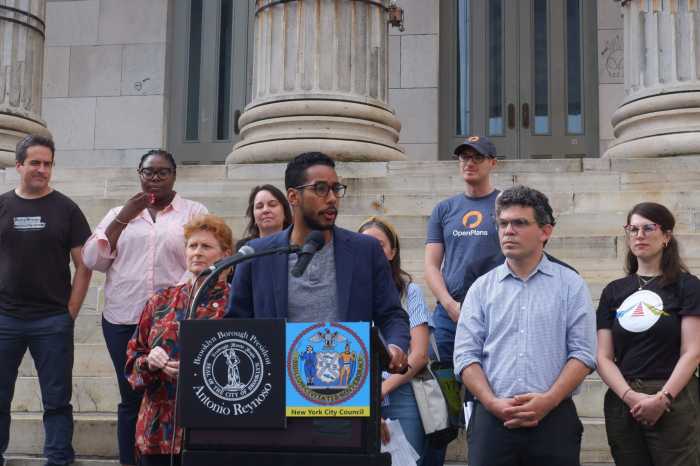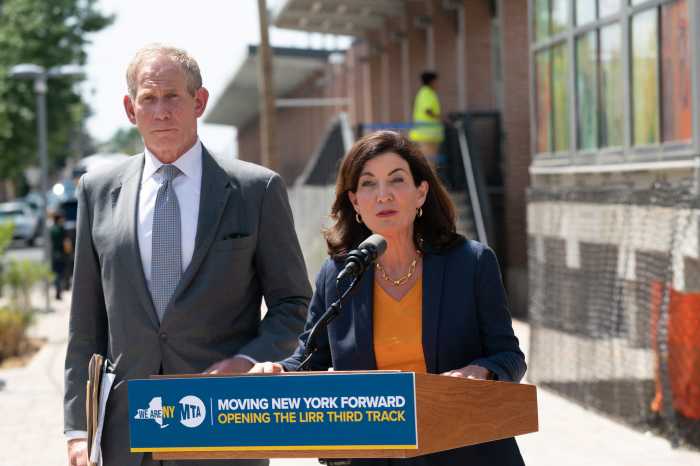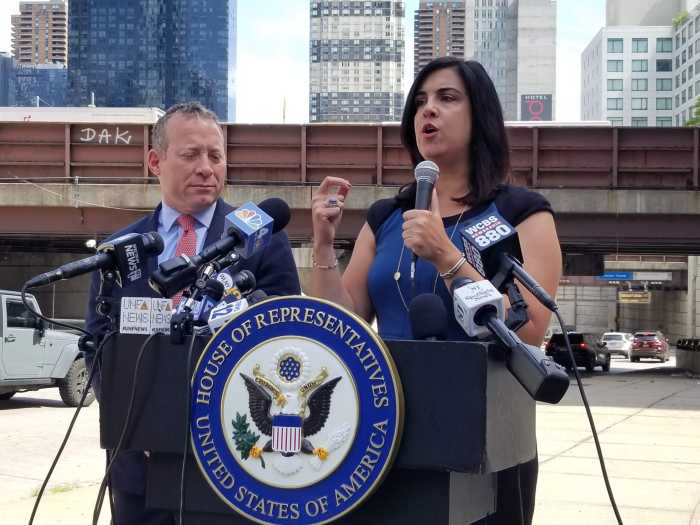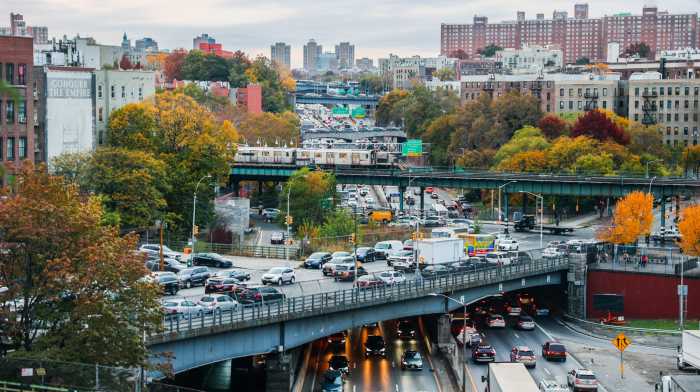Taxi and for-hire vehicle passengers, not drivers, will pay congestion pricing tolls, according to a board deliberating rates, exemptions, and rules for the Manhattan tolling program.
The decision was confirmed by the chair of the Traffic Mobility Review Board (TMRB), Carl Weisbrod, following the panel’s third meeting on Monday, Oct. 2, alleviating a frequently expressed concern that the cost of the toll would be borne by low-income drivers.
“Definitely, our goal is to not charge the driver, but charge the passenger, which I think makes the most sense with taxis and FHVs,” Weisbrod told reporters. “I think it’s fairly clear that’s the consensus of all of us.”
That means any vehicle bearing a Taxi & Limousine Commission license plate will not be charged the congestion fee when entering Manhattan south of 60th Street, even if it is not carrying a passenger; instead, all taxi and for-hire vehicle (FHV) passengers will pay a surcharge on top of their fare.
What the surcharge will be has still not been determined, but the TMRB presented a range of “scenarios” that would charge passengers of yellow and green cabs, as well as black cars, between $1 and $1.50 extra per trip. Riders in app-based FHVs like Uber and Lyft would pay between $1.50 and $2 extra.
The board may approve discounts in the nighttime, when there’s less traffic, of between 50-75%, and may also levy an additional $0.75 surcharge on Ubers and Lyfts for daytime trips entirely within the central business district.
Taxis and FHVs make up more than half of all vehicles in the central business district at any given time on average, according to the board. But drivers and advocates have noted that drivers have already paid surcharges to the MTA for years, and have said additional fees would be crushing to the workforce, which largely consists of immigrants who struggle to make a decent living.
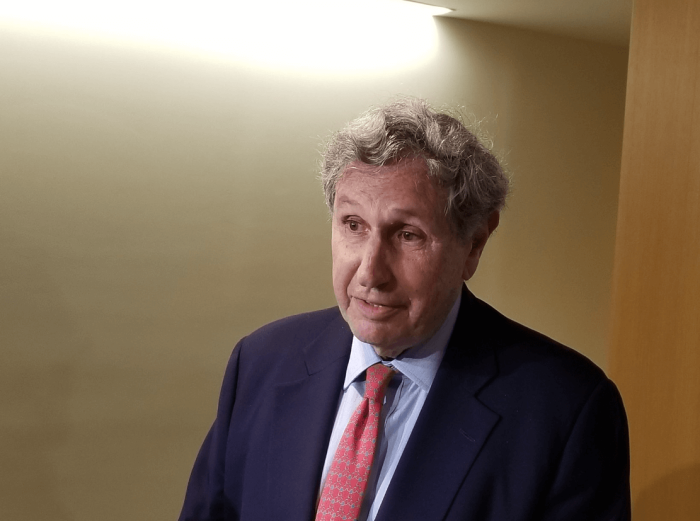
TMRB senior advisor Juliette Michaelson acknowledged at the board meeting that it is the passenger who determines whether a cab enters Manhattan—thereby contributing to congestion— not the driver.
“Per-ride tolls are more easily passed onto the customers who, after all, are the ones making the decisions to add to the traffic in the CBD,” said Michaelson.
Since taxis and FHVs are such a large proportion of vehicles in the CBD, the decision on the surcharge is a “critical recommendation,” said Michaelson.
Drivers, however, were still not pleased with the decision: they are pushing for a full exemption, arguing an additional charge on passengers will hurt their business and cost them customers. Their push is supported by more than two dozen New York elected officials.
“Passing a cost onto the rider is not a solution when that cost will lead to less fares and leave drivers jobless and medallion owner-drivers with life-long debt,” said Bhairavi Desai, executive director of the New York Taxi Workers Alliance (NYTWA), a 21,000-member cabbie union. “There needs to be a full exemption for taxi cab service. Nothing else is sustainable.”
Several members of NYTWA were escorted out of the board meeting by security guards after disrupting the proceedings, demanding a full exemption.
The TMRB also decided on Monday that drivers already paying tolls to enter Manhattan through the Holland, Lincoln, Brooklyn-Battery, and Queens-Midtown tunnels will get a “crossing credit.” That’s essentially a reduced toll in comparison to crossings into Manhattan that are currently free, like the Brooklyn, Manhattan, Williamsburg, and Queensboro bridges.
The credits are intended to minimize “toll shopping,” whereby motorists go out of their way to enter Manhattan on a lower-priced crossing. For example, crediting a user of the Brooklyn-Battery Tunnel may provide less incentive to avoid the tunnel — which currently is tolled at $6.94 — and head to the presently-free Brooklyn Bridge instead, causing a deluge of traffic there.
Like the taxi surcharge, the board has also not arrived at the exact dollar value of the crossing credit, but it could be anywhere between $4 and $7 tacked off the congestion charge.
That could provide a big discount particularly to drivers entering Manhattan from New Jersey, who have been outspoken critics of the MTA’s congestion pricing plan. The Garden State is suing in federal court to block the program, with Gov. Phil Murphy arguing the MTA’s 4,000-page environmental assessment on the impacts of the toll was a flim-flam job.
Credits would not apply to outlying crossings well outside the CBD, like the George Washington and Verrazzano-Narrows Bridge. That is unacceptable to New Jersey Congressman Josh Gottheimer, one of congestion pricing’s most vocal foes.
“The proposed credits are a joke compared to what this will cost families every day,” said Gottheimer. “The credits don’t even apply to the George Washington Bridge. How can we take these scenarios seriously when New York is already putting up toll cameras that will whack Jersey drivers?”
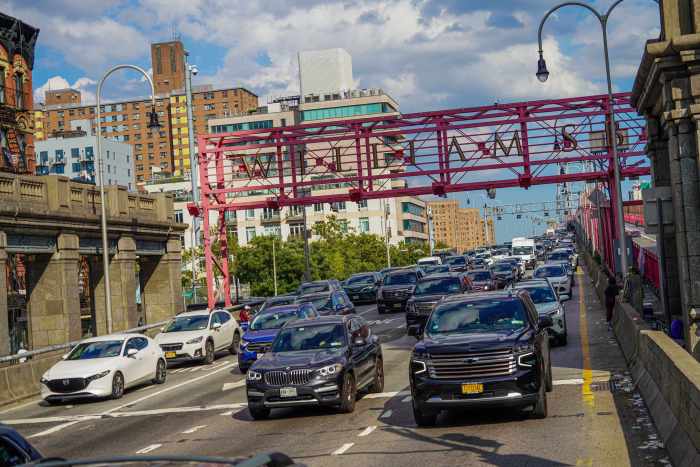
The board is also set to heavily discount the toll during the nighttime hours, largely as a means of incentivizing off-hours deliveries. The discount could be as high as 75%, though the exact percentage and the span of nighttime hours is still up for debate.
The base toll rate, the amount that most motorists will pay, has still not been decided, but will land anywhere between $9 and $23. MTA Chair and CEO Janno Lieber suggested in an interview Monday that the rate could fall somewhere in the middle, at $15.
Dozens of groups have submitted formal exemption requests to the board, but officials have cautioned that for each exemption that is granted, the base toll will rise for everyone else.
Other factors have largely been decided, though. Commuter buses and specialized government vehicles like garbage trucks and street sweepers will be exempt, while small trucks will pay twice what cars do and large trucks will pay three times the auto rate.
The authority is also set to discount the toll by 50%, after the first ten trips in a month, for “low-income frequent drivers,” defined as those making less than $50,000 per year who frequently drive into Manhattan because they have little other choice. That’s more than the 25% discount the MTA previously agreed to, as a condition of federal approval for the overall program.
Congestion pricing is intended to raise billions in dollars for the MTA’s capital program, allowing the authority to make more subway stations accessible for people with disabilities, replace ancient subway signals, buy new train cars, and complete costly megaprojects like the Second Avenue Subway. Officials also want the program to reduce punishing traffic congestion in Manhattan — where buses are the slowest in the nation and emergency vehicles are often blocked from responding to calls — and reduce carbon emissions in the region.
The program is set to finally go into effect next spring, five years after it was approved by New York lawmakers. Weisbrod could not say when the board would make its final set of recommendations, nor how many more meetings would take place; once the TMRB votes on a recommendation, it will go to the full MTA Board for approval.
A contractor hired by the MTA has already started erecting the overhead gantries from which tolls will be charged.
Read more: Debate on Legal Bike Locking to Street Signs



